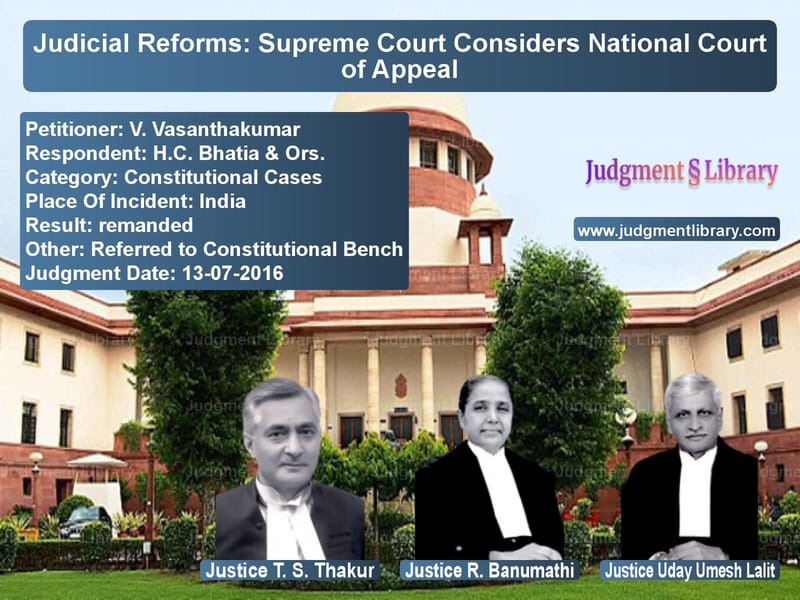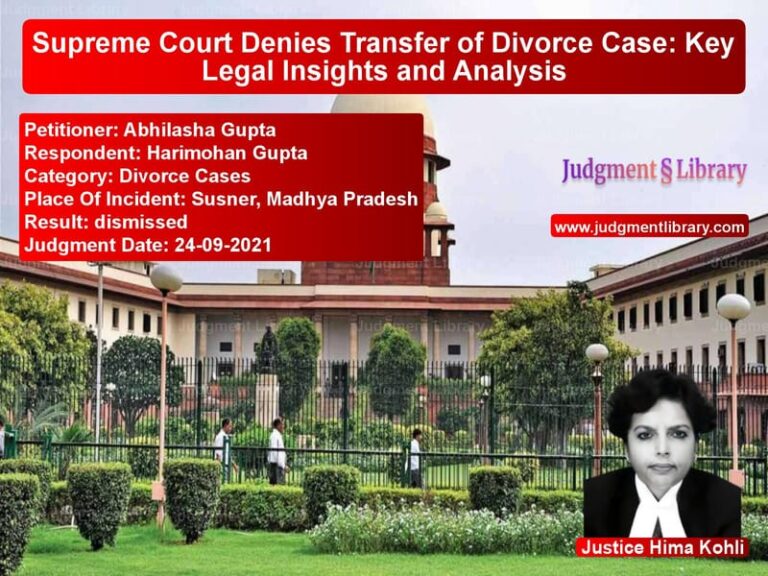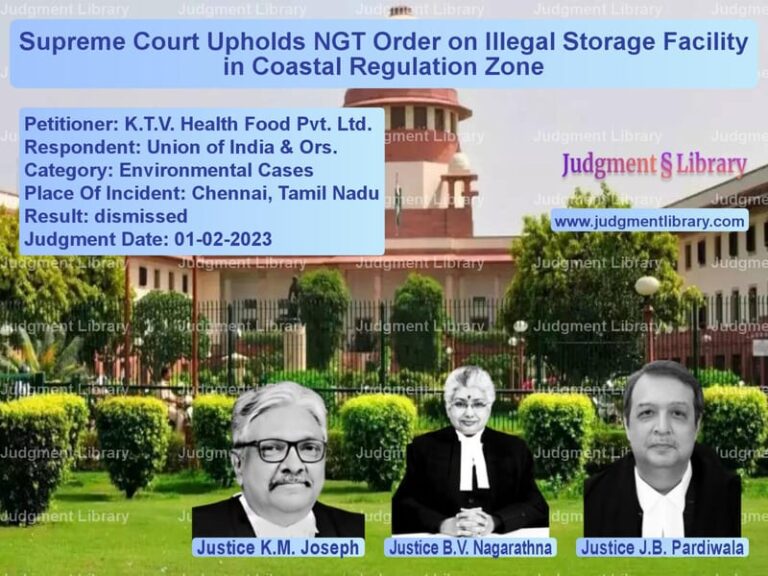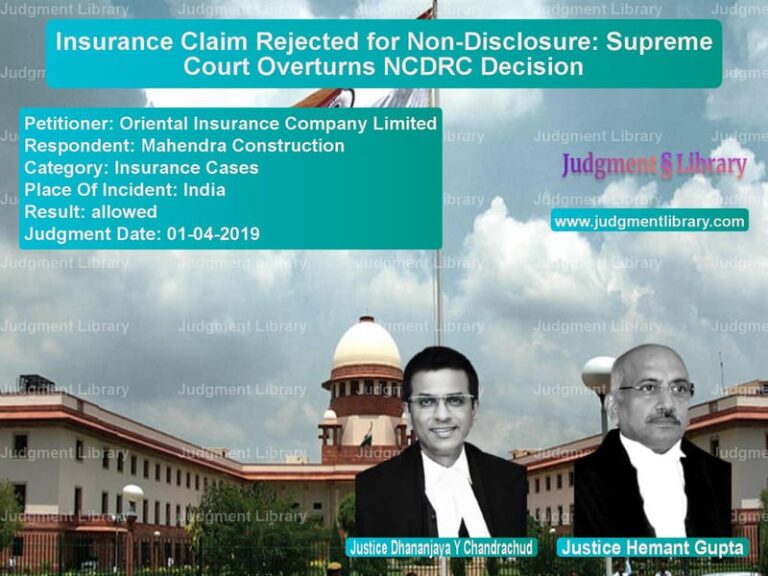Judicial Reforms: Supreme Court Considers National Court of Appeal
The case of V. Vasanthakumar vs. H.C. Bhatia & Ors. brings to light significant concerns regarding access to justice, judicial efficiency, and the structural framework of the Indian judiciary. The Supreme Court was called upon to examine whether a National Court of Appeal or Regional Courts of Appeal should be established to address the growing backlog and to ensure equal access to justice for litigants across the country.
The judgment considers various reports and recommendations by the Law Commission and legal experts, all pointing to the need for judicial reforms. The Court, recognizing the gravity of these issues, referred the matter to a Constitutional Bench for further deliberation.
Background of the Case
The petitioner, V. Vasanthakumar, an advocate, filed a Public Interest Litigation (PIL) seeking structural reforms in the judiciary. He contended that:
- The Supreme Court, intended as a Constitutional Court, had gradually become a regular appellate court.
- Litigants from distant states faced difficulties in accessing the Supreme Court due to its location in Delhi.
- The increasing backlog of cases required an alternative mechanism for efficient adjudication.
The petition sought the establishment of a National Court of Appeal or Regional Courts of Appeal to handle routine matters, leaving the Supreme Court to focus on Constitutional issues.
Key Legal Issues Considered
- Should the Supreme Court be restructured to focus solely on Constitutional matters?
- Would the creation of a National Court of Appeal improve access to justice?
- Would such reforms require an amendment to the Constitution?
- Would these changes affect the basic structure of the Constitution?
Arguments from Both Sides
Petitioner’s Arguments
V. Vasanthakumar contended:
- “The Supreme Court should not act as a general appellate court for all matters.”
- “Litigants from southern and northeastern states face geographical and financial hurdles in approaching the Supreme Court.”
- “Other countries have successfully implemented similar multi-tier judicial structures.”
- “Creating Courts of Appeal would reduce pendency and ensure timely justice.”
Respondents’ Arguments
The Attorney General and other respondents countered:
- “Article 136 of the Constitution provides an inalienable right to approach the Supreme Court.”
- “Creating an intermediate court would dilute the authority of the Supreme Court.”
- “Judicial self-restraint in granting special leave petitions would be a more practical solution.”
Supreme Court’s Judgment
The Supreme Court refrained from making a final ruling and instead referred the matter to a Constitutional Bench, stating:
- “The issue involves fundamental questions regarding the structure and jurisdiction of the Supreme Court.”
- “Access to justice is a Constitutional right, and delays in disposal of cases impact this right.”
- “The matter requires comprehensive deliberation before any constitutional amendment is considered.”
Analysis of the Judgment
The Supreme Court acknowledged several key concerns:
- The backlog of cases in the Supreme Court is a serious issue, requiring immediate attention.
- Litigants from distant states are at a disadvantage due to the centralized location of the Supreme Court.
- The establishment of an intermediary appellate court could potentially reduce pendency.
- Any restructuring must align with the basic structure of the Constitution.
Implications of the Judgment
This ruling has significant implications:
- It opens the door for discussions on judicial reforms and efficiency.
- It highlights the necessity of making justice accessible to all citizens, regardless of their location.
- It sets the stage for a possible reorganization of the Supreme Court’s jurisdiction.
- It emphasizes the need for a balanced approach that preserves Constitutional integrity while addressing practical concerns.
Conclusion
The Supreme Court’s decision to refer this issue to a Constitutional Bench signifies its importance in shaping the future of the Indian judicial system. The ruling underscores the need for systemic reforms to ensure timely and accessible justice while maintaining the authority and integrity of the Supreme Court. The final outcome will have lasting effects on how the judiciary functions and serves the people of India.
Don’t miss out on the full details! Download the complete judgment in PDF format below and gain valuable insights instantly!
Download Judgment: V. Vasanthakumar vs H.C. Bhatia & Ors. Supreme Court of India Judgment Dated 13-07-2016-1741873205117.pdf
Direct Downlaod Judgment: Direct downlaod this Judgment
See all petitions in Public Interest Litigation
See all petitions in Constitution Interpretation
See all petitions in Judgment by T.S. Thakur
See all petitions in Judgment by R. Banumathi
See all petitions in Judgment by Uday Umesh Lalit
See all petitions in Remanded
See all petitions in Referred to Constitutional Bench
See all petitions in supreme court of India judgments July 2016
See all petitions in 2016 judgments
See all posts in Constitutional Cases Category
See all allowed petitions in Constitutional Cases Category
See all Dismissed petitions in Constitutional Cases Category
See all partially allowed petitions in Constitutional Cases Category







